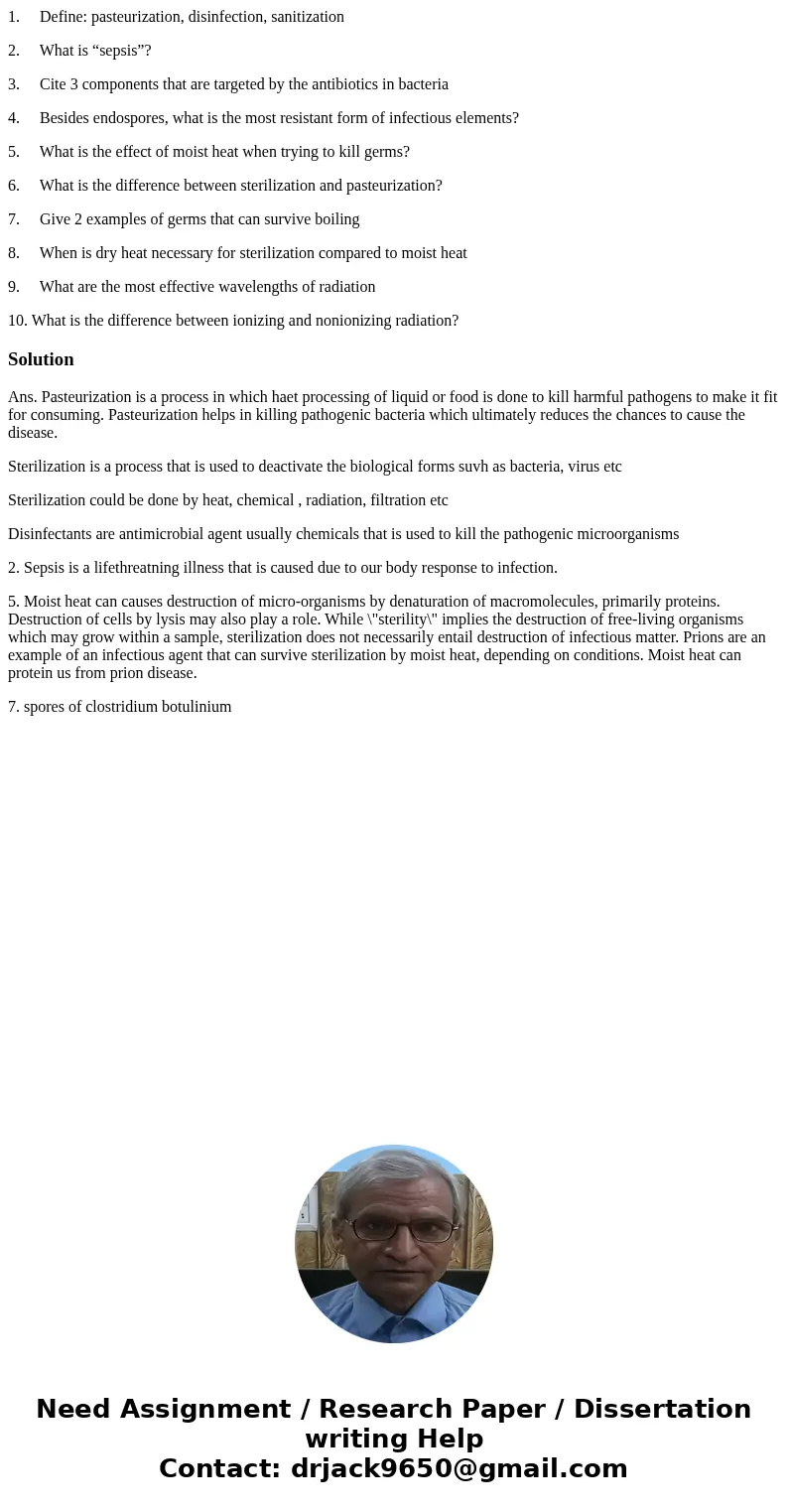1 Define pasteurization disinfection sanitization 2 What is
1. Define: pasteurization, disinfection, sanitization
2. What is “sepsis”?
3. Cite 3 components that are targeted by the antibiotics in bacteria
4. Besides endospores, what is the most resistant form of infectious elements?
5. What is the effect of moist heat when trying to kill germs?
6. What is the difference between sterilization and pasteurization?
7. Give 2 examples of germs that can survive boiling
8. When is dry heat necessary for sterilization compared to moist heat
9. What are the most effective wavelengths of radiation
10. What is the difference between ionizing and nonionizing radiation?
Solution
Ans. Pasteurization is a process in which haet processing of liquid or food is done to kill harmful pathogens to make it fit for consuming. Pasteurization helps in killing pathogenic bacteria which ultimately reduces the chances to cause the disease.
Sterilization is a process that is used to deactivate the biological forms suvh as bacteria, virus etc
Sterilization could be done by heat, chemical , radiation, filtration etc
Disinfectants are antimicrobial agent usually chemicals that is used to kill the pathogenic microorganisms
2. Sepsis is a lifethreatning illness that is caused due to our body response to infection.
5. Moist heat can causes destruction of micro-organisms by denaturation of macromolecules, primarily proteins. Destruction of cells by lysis may also play a role. While \"sterility\" implies the destruction of free-living organisms which may grow within a sample, sterilization does not necessarily entail destruction of infectious matter. Prions are an example of an infectious agent that can survive sterilization by moist heat, depending on conditions. Moist heat can protein us from prion disease.
7. spores of clostridium botulinium

 Homework Sourse
Homework Sourse